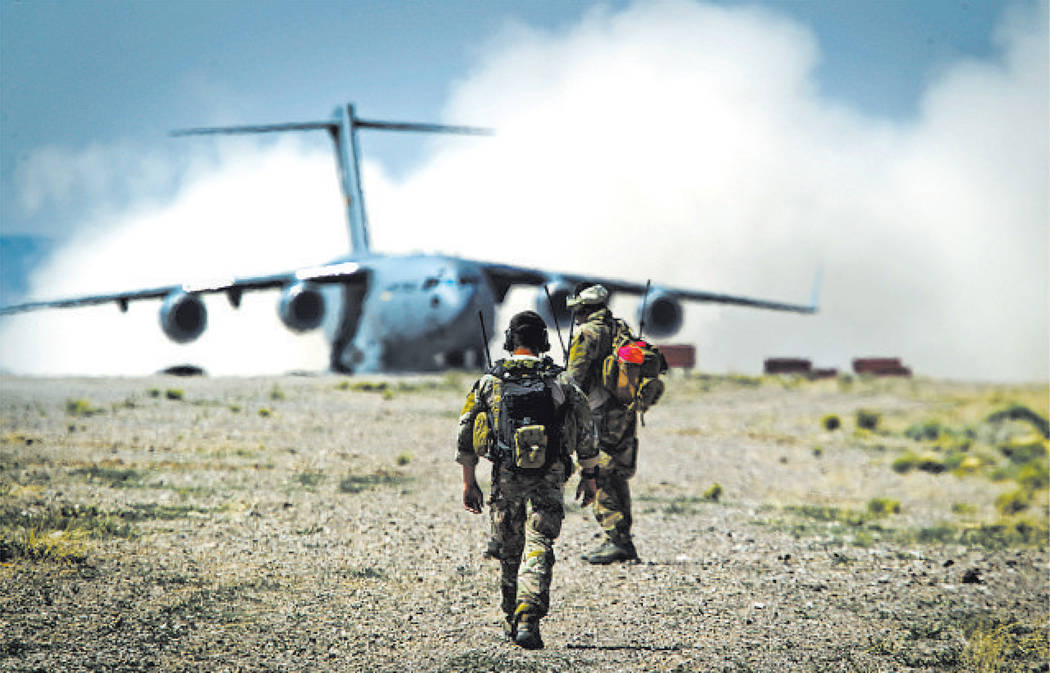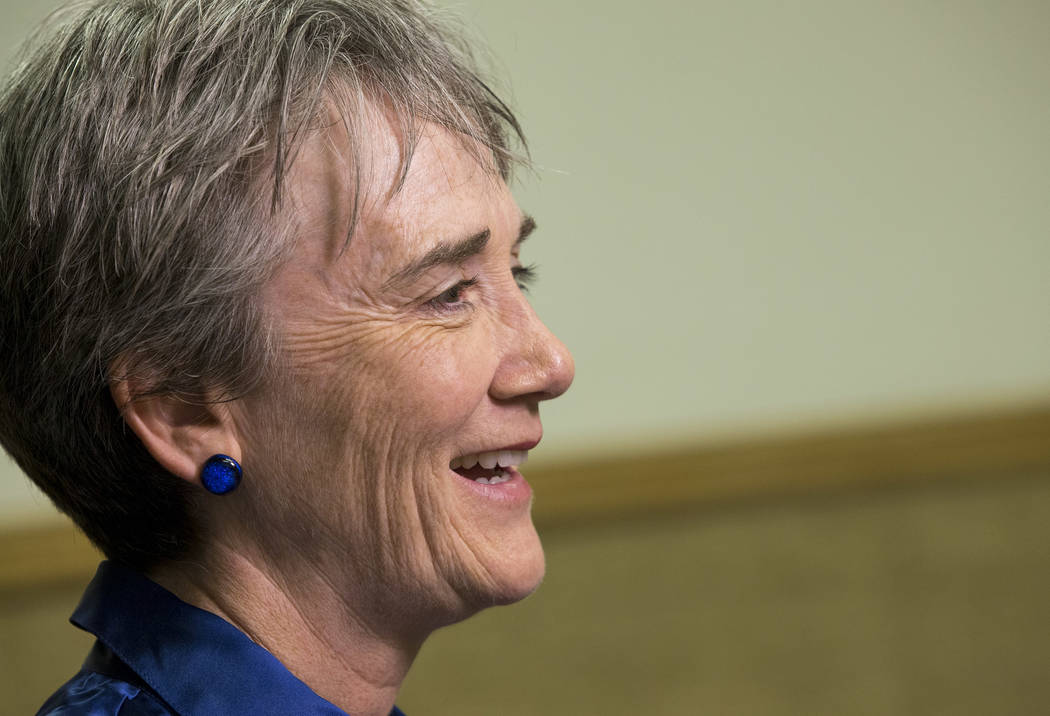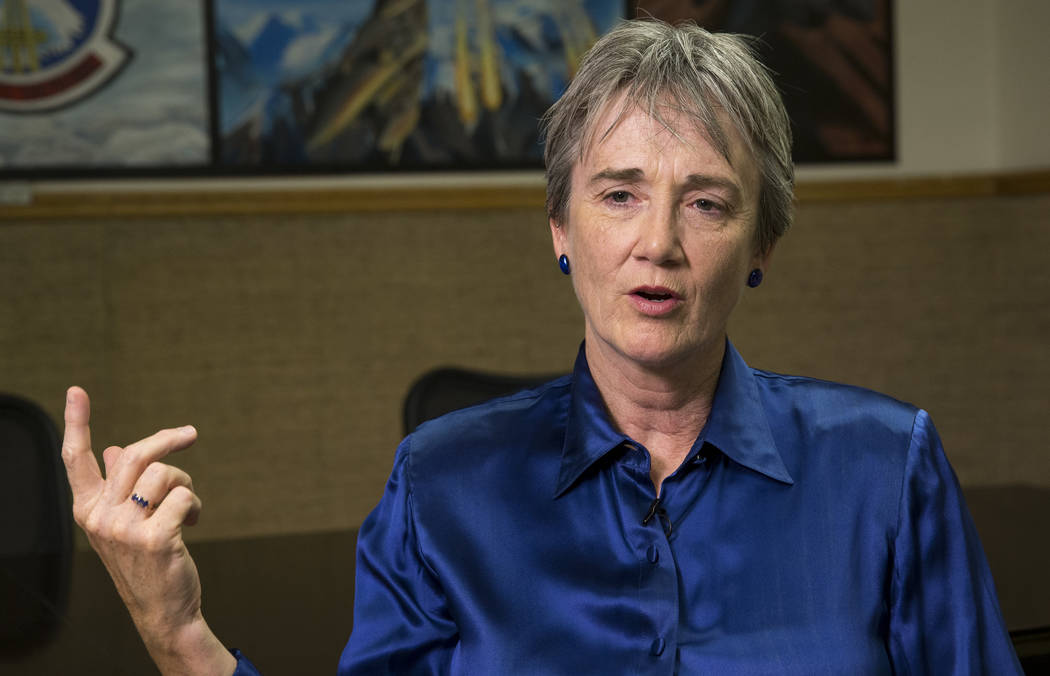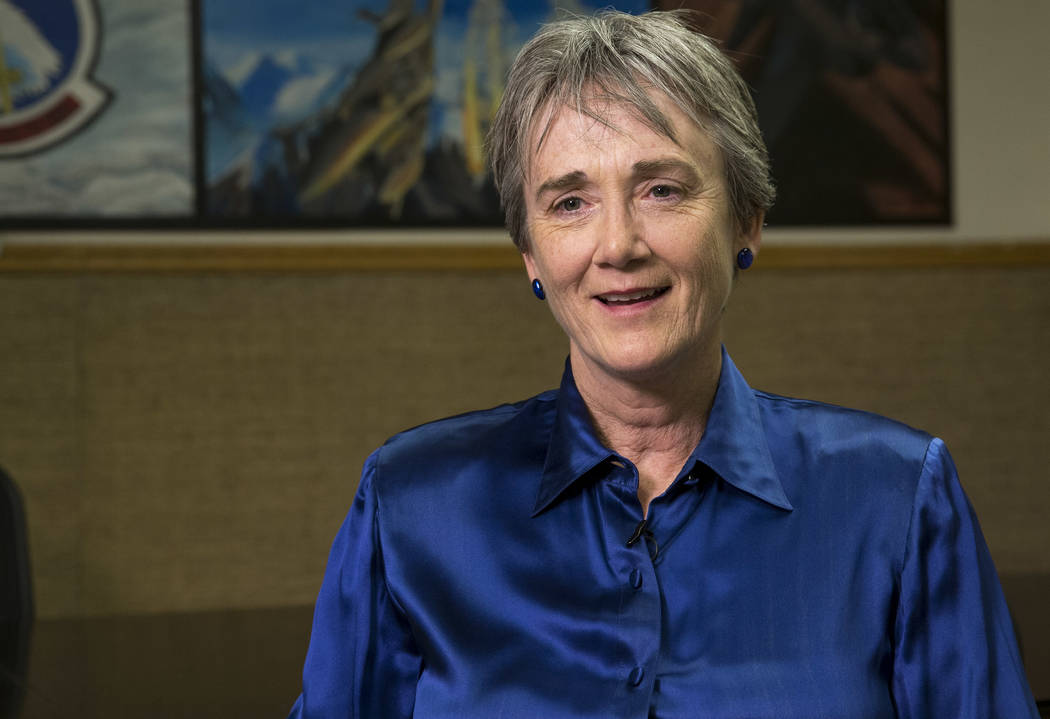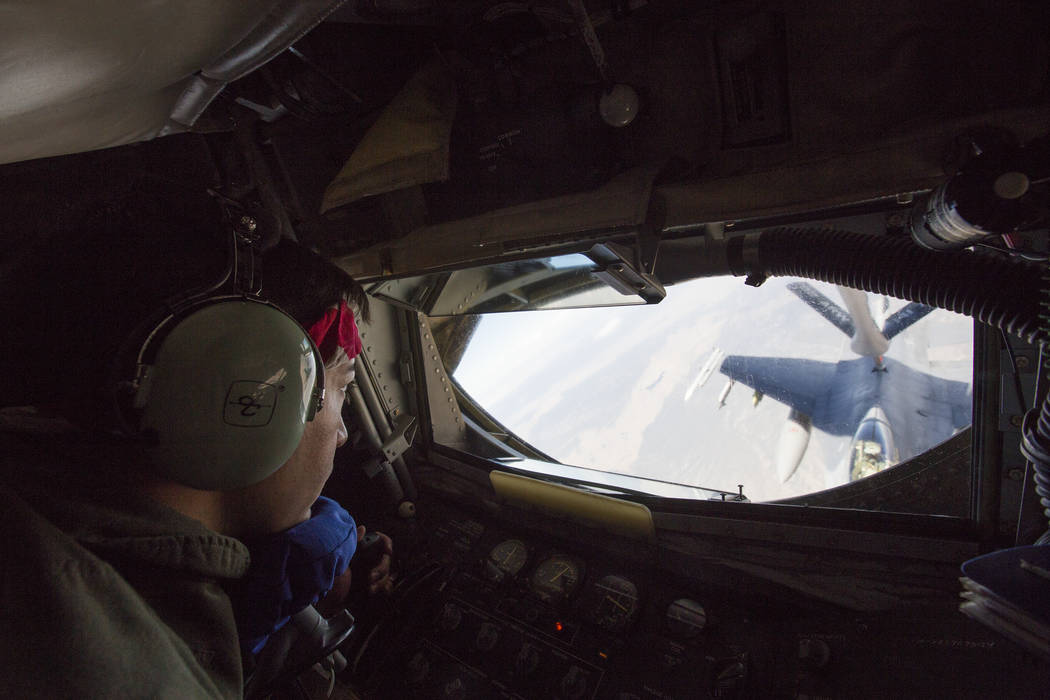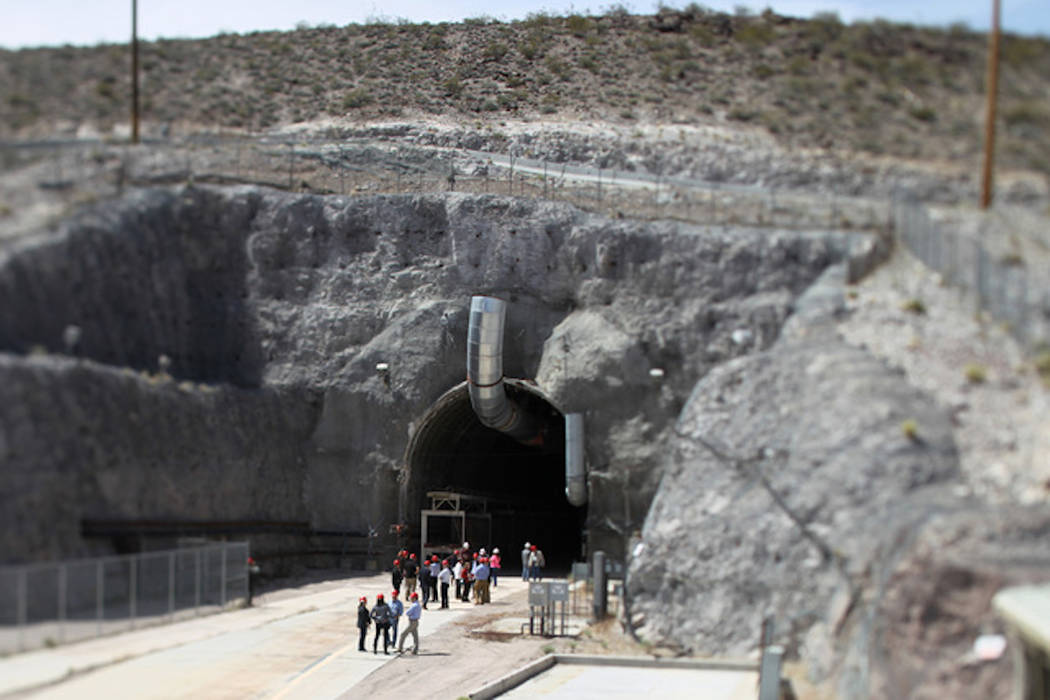Air Force chief objects to Yucca Mountain nuclear routes
Air Force Secretary Heather Wilson sees a need to protect the space frontier and envisions bolstering the ranks of drone warfare all while preserving the vast Southern Nevada range that shrinks as fighter jets zip faster across it.
What she doesn’t see in her crystal ball is a nuclear-waste train rolling across the 2.9-million-acre Nevada Test and Training Range to reach the Department of Energy’s planned repository at Yucca Mountain in Nye County, 100 miles northwest of Las Vegas.
“If Yucca Mountain becomes a storage area it needs to operate without impacting the ability of the country to defend itself,” Wilson said recently in an exclusive interview with the Las Vegas Review-Journal. “There is no route across the range that would not impact testing and training.”
Even a rail corridor that closely parallels the range’s boundary in Nye County could raise encroachment issues, she said, comparing what Nellis Air Force Base has dealt with balancing jet noise complaints and national security as urban Las Vegas sprawled closer to it over the decades.
“We do night operations. We train people to go to war,” she said after wrapping up her first visit as secretary of the Air Force to the Nellis and Creech bases.
If the Trump administration follows through with its blueprint to restart the Yucca Mountain Project that was dormant and funding-starved during the Obama administration, she will stay the course previously posed by the Air Force.
“I don’t think my concerns are any different than what has already been expressed by my predecessors. … We still have a very high need to be able to use the Nellis training area for both training and tests,” she said.
In 2003, Air Force Secretary James Roche and Chief of Staff Gen. John P. Jumper wrote the House Armed Services Committee objecting to the Energy Department’s proposed Chalk Mountain route across the range. They said it would impact “mission-critical systems evaluations” as well as air combat training. They noted that 75 percent of all Air Force live munitions stateside are employed there.
Roving the range
The range’s role in testing of how new generation aircraft perform and can be detected or not by radar is also vital to the readiness.
Roche and Jumper also expressed concern for the fringe of the range citing “any modified routes into portions of the NTTR (Nevada Test and Training Range). Additionally, any overflight restrictions on aircraft operating in NTTR-associated airspace will negatively impact our readiness activities.”
The Chalk Mountain route, a shortcut option for rail shipments of spent nuclear fuel assemblies from the Midwest and eastern U.S., was later downgraded to “nonpreferred” by the Energy Department but is still part of the routes evaluated for the license application submitted to the Nuclear Regulatory Commission in 2008.
Wilson’s four-day trip included a helicopter journey through part of the 12,000 square miles of restricted air space — the largest contiguous air-and-ground space for military training in the free world.
Despite its size, the Air Force wants to expand it because it has shrunk relative to its purpose as military jets have gotten faster and faster.
The F-22 Raptor supercruiser, for example, can zip across it in seven minutes, flying at roughly 17 miles per minute.
Wilson, a 56-year-old U.S. Air Force Academy graduate, Rhodes scholar and former Republican Congress member from New Mexico, spoke on a wide range of topics from Yucca Mountain to performance of new Block-5 remotely piloted Reapers at Creech Air Force Base to issues with F-35 joint strike fighter jets to her call for a larger cadre of airmen devoted to protection and use of space and cyberspace.
She oversees 660,000 active-duty, National Guard and reserve airmen and a budget of $132 billion.
Contact Keith Rogers at krogers@reviewjournal.com or 702-383-0308. Follow @KeithRogers2 on Twitter.


